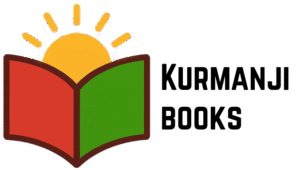The Journey of “My First Words in Kurdish”
The creation of “My First Words in Kurdish,” the very first book in the “My First Kurdish Books” series, began with a simple, yet profound question that I imagine many parents in similar situations ask themselves:
“If my son grows up in an environment where English is the dominant language, how will he ever truly connect with and learn the beautiful Kurdish words that were such an integral part of my own childhood and upbringing?”
That single thought, born from a father’s hope, set me off on an unexpected and rewarding journey. It wasn’t just about writing one book; I soon realized that if I was going to do this, I wanted to create a foundational series. Tackling eight books right from the start instead of easing in with one was certainly a challenge, but one I felt compelled to take on. This project became a deep dive into the nuances of translation, the exciting world of AI image generation, the intricacies of children’s book formatting, and the practicalities of publishing. I was doing it all myself – the writing, research, design, and even building the website you’re on now. It’s been an incredible period of learning new skills, and I now have such a profound respect for every single discipline involved in bringing a book to fruition.
My starting point for “My First Words” was to think about the world from a young child’s perspective. What do they see, touch, and talk about every day? This led me to select foundational categories: family members, common items around the home, familiar foods, basic colors, well-known animals, and simple body parts. From these categories, I carefully curated a list of 50 essential words.
Translating these words into Kurmanji was a process I approached with great care. The Kurmanji dialect is wonderfully rich, but it has regional variations. Choosing the most suitable word often meant research and thoughtful decisions to ensure clarity for young learners.
For the illustrations, I embraced modern technology, utilizing AI tools to help bring the words to life visually. As someone who works in tech as a data engineer, I’m fascinated by its potential, and frankly, my background in data and systems thinking was invaluable. The organizational skills I’ve honed in my career were key to managing a project of this scale, especially with a little one around! My son was often on my lap during the many hours I spent on this, his curious hands reaching for the keyboard, which kept me on high alert for any accidental edits! Much of this work was done in the quiet moments between his naps. I prompted and guided the AI for images, then meticulously reviewed and handpicked those that felt clear, friendly, and truly representative of each word.
Finally, I focused on the layout, designing each page with simplicity: a vibrant image paired with the English and Kurmanji words. Easy to see, easy to point to, and hopefully, easy to learn together.
Is this first book, or the process behind it, absolutely perfect? Likely not. But it’s a tangible, heartfelt beginning. It’s a real book, created with love, that my son – and I hope, perhaps your child too – can hold, explore, and genuinely enjoy. And knowing that it might help other families connect with our beautiful language makes all the late nights and challenging moments entirely worth it.

